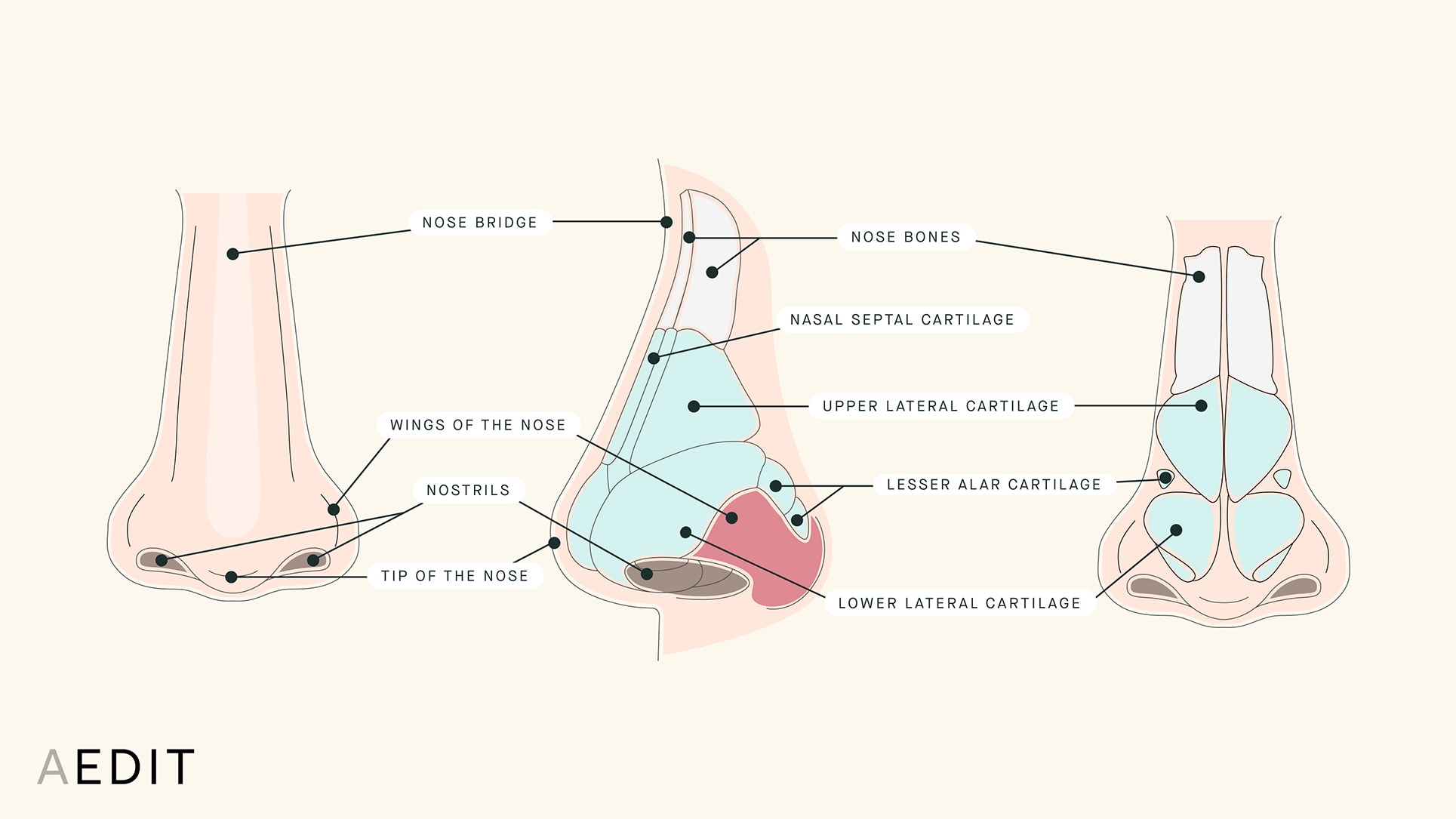
The Skinny
Average Recovery
1 weeks
Permanence
Permanent
Application
Surgical Procedure
Surgical
Yes
Cost
$3000 - $15000
The Specifics
What is an endoscopic rhinoplasty?
An endoscopic rhinoplasty utilizes the closed rhinoplasty surgical approach (meaning internal incisions without full retraction and exposure of the nasal structures) with the assistance of a small, lighted camera (endoscopic approach) to help the surgeon better visualize internal structures. This type of nasal surgery approach allows for more precise alterations with less invasiveness and recovery time. Many surgeons maintain, however, it is not as effective as the full, open plastic surgery approach.
The Anatomy of the Nose

What cosmetic concerns does an endoscopic rhinoplasty procedure treat?
Who is the ideal candidate for an endoscopic rhinoplasty procedure?
Endoscopic rhinoplasties are believed to offer the less invasive/less recovery benefits of a closed approach with better visualization. Ideal candidates have minor nasal deformities, require revision rhinoplasties, or chronic sinus problems. Endoscopic rhinoplasty is not recommended for children under the age of 18 or those with more involved concerns.
What is the average recovery associated with an endoscopic rhinoplasty procedure?
Most patients experience less than one week of initial recovery time. Most swelling, bruising, and tenderness will resolve within a week. Many patients return to work within five to seven days. Activity precautions are taken for up to six weeks.
What are the potential side effects of an endoscopic rhinoplasty procedure?
As with the closed rhinoplasty approach, an endoscopic rhinoplasty carries minimal to no scarring risk due to the internal incisions. As with any surgical procedure, numbness, nerve damage, and blood vessel damage may occur.
What can someone expect from the results of an endoscopic rhinoplasty procedure?
An endoscopic rhinoplasty provides permanent results that evolve into the final appearance over the course of 12 to 18 months. To better understand the healing and downtime associated with the procedure, check out our complete guide to rhinoplasty recovery.
What is the average cost of an endoscopic rhinoplasty procedure?
This is a one time permanent surgical procedure that can cost anywhere from $3,000 to $15,000. The actual cost of the procedure is dependent upon location, surgeon, and length and involvement of the surgery. To learn more, check out our complete guide to rhinoplasty cost.
Pros
- Small Incisions
- Better Visualization Of The Nasal Structures
- Better Visualization Of Nasal Shape
- Faster Recovery Times
- Less Postoperative Swelling
- Less Trauma To The Tissue
- Less Potential Scarring
Cons
- Limited Doctors With Expertise
- More Technically Challenging
- Limited Data Of Any Real Advantage Over Traditional Techniques
Invasiveness Score
Invasiveness is graded based on factors such as anesthesia practices, incisions, and recovery notes common to this procedure.
What to Expect
An endoscopic rhinoplasty offers patients a shorter recovery time using the closed technique but offers better visualization by using an inoperative camera. Here is a quick guide for what to expect before, during, and after an endoscopic rhinoplasty.
The Takeaway
An endoscopic rhinoplasty provides the lessened recovery time and less invasiveness benefits of a closed rhinoplasty approach, while improving a plastic surgeons’ visualization with the endoscopic approach (assistance of a lighted camera endoscope).






